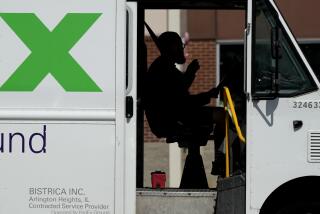Factory activity, construction spending rise more than expected
- Share via
U.S. manufacturing grew more quickly in September as production and hiring increased, suggesting that factories would help keep the economy from slipping into a new recession.
The factory sector has shouldered the broader economic recovery, with September marking a 26th straight month of expansion, and the manufacturing report implied that an outright contraction in output would probably be avoided.
The Institute for Supply Management said its index of national factory activity rose to 51.6 last month from 50.6 in August, boosted by a rebound in production and increased factory hiring. But new orders fell for a third straight month.
Economists had expected the index to edge down to 50.5. A reading above 50 indicates expansion in manufacturing.
The growth in U.S. manufacturing is bucking a weak global trend. Factory activity in Europe and Asia slumped in September to levels not seen since the depths of the financial crisis, pulling global factory activity lower for the first time in more than two years.
A separate report from the Commerce Department showed construction spending rose 1.4% in August as outlays on state and local government building projects rose sharply.
Economists, who had expected a decline, said it implied a somewhat stronger pace of third-quarter growth than they had been anticipating.
In yet another positive sign for the economy, borrowing by small businesses in August rose to its highest level since April 2008.
While manufacturing accounts for roughly 12% of gross domestic product and about 11% of nonfarm employment, the sector’s continued expansion and an appetite by cash-rich businesses to spend on machinery should help to steer the economy from recession.
September’s manufacturing report showed a pickup in factory jobs, which could be a good omen for the government’s monthly jobs report for September on Friday. The economy failed to add jobs in August, leaving the unemployment rate at a lofty 9.1%.
The one dark spot in the report was the third straight decline in orders.
“The main concern going forward would be if new orders didn’t pick up,” said Bradley Holcomb, chair of the ISM manufacturing business survey committee in Dallas, Texas.
But inventory growth has been slowing and manufacturers viewed customers’ supplies as too low, which could lead to an increase in orders. In addition, orders for exports rose and suppliers are taking a little bit longer to make deliveries to manufacturers, which is also a good sign.
More to Read
Inside the business of entertainment
The Wide Shot brings you news, analysis and insights on everything from streaming wars to production — and what it all means for the future.
You may occasionally receive promotional content from the Los Angeles Times.










